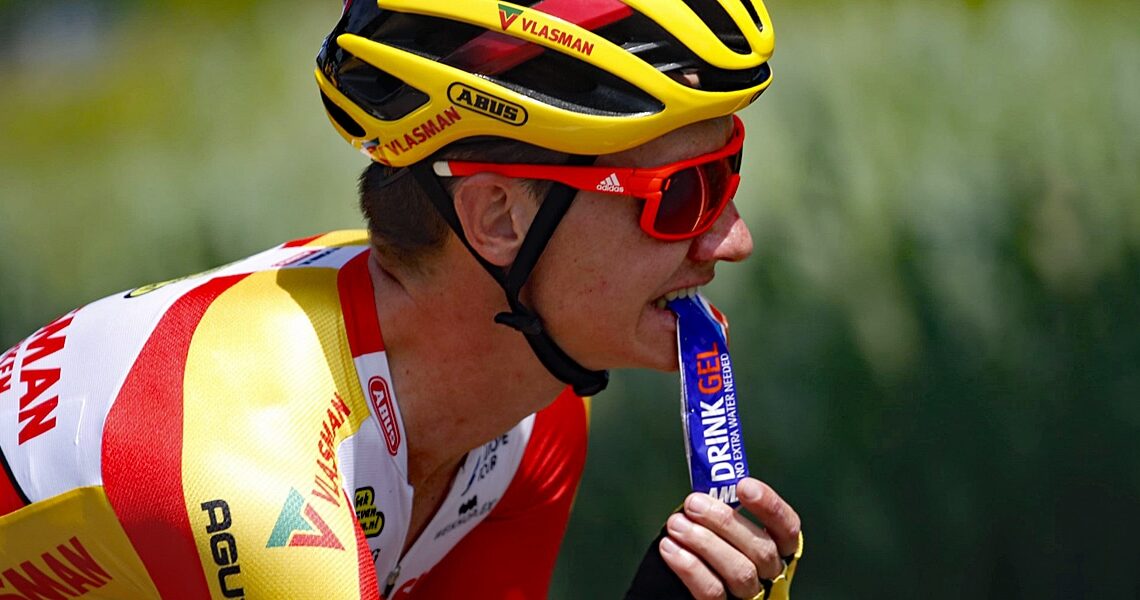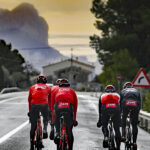
What if you could increase the nutrition delivered to your muscles by 10%, 15%, or even more without changing your diet on or off the bike? It may sound too good to be true, but it’s not.

The peloton is aiming higher and higher in the carbohydrate arms race of fueling on the bike, carefully selecting products and planning strategies. However, many of us make this hidden error every time we open a gel: some of the gel remains in the wrapper.
When we grab a gel for a ride or race, we often assume we’re getting 100% of the stated carbohydrates on the label. In reality, I’ve seen anywhere from 5% to 28% of the gel remain inside the wrapper. Even a 10% loss would translate to 81 g/hour instead of 90, or 108 g/hour instead of 120. If you multiply this loss over four or five hours, or consider the finishing times of longer gravel races, this could lead to missing a significant amount of fuel for the legs, ultimately hampering performance.
Admittedly, as a sports dietitian, I hadn’t given this scenario much thought when creating race-day plans. That changed recently when I purchased around 20 different types of gels with the intention of comparing their ingredients and packaging. Noticing variations in consistency, shape, and ease of use led me to wonder: how much product can I actually get out of each wrapper under real race-day conditions.
Training Tests
Curious, I started testing these gels on recent training rides. I squeezed them as I would during a race, trying to be efficient but not spending too much time extracting every last drop with the two-handed pulling method many of us will be familiar with. The results were definitely an eye-opener.
I ended up leaving behind anywhere from 9.9% to 28% of the gel in the wrapper depending on how I consumed the gel and the brand I was using. While you can minimize the leftover with most brands by carefully kneading and squeezing, that isn’t always safe or feasible in technical terrain, in a tight peloton, or under race pressure.

Race Day Test
To see how much gel I’d leave behind under real conditions, I tested my observations during a 41-mile MTB race at the U.S. National Whitewater Center in Charlotte, NC. I aimed for 100–120 g of carbs per hour, carrying 150 g of drink mix in a 2L USWE pack plus two Amacx gels and three or four Carbs Fuel gels. Though one Amacx gel leaked mid-race, I still gathered useful data. For Carbs Fuel, 2 g (2.7%), 12 g (16.6%), and 7 g (9.7%) of total gel mass remained in the wrapper—an average of 9.7% left behind. Because that leftover includes water weight, it translates to about 5 g of actual carbs wasted per packet. One intact Amacx gel showed 10 g (14%) of total gel mass left over.
I planned 370 g of carbs for the 3-hour and 45-minute race (about 99 g/hour), but lost 19 g plus 4 g (assumed average from the leaked Amacx, though it felt like more), totaling 23 g carbohydrates unconsumed. That dropped my actual intake to about 92.5 g/hour, not 99 g/hour. While a 10% gap may sound small, it compounds every hour, and missing even one gel can hurt late-race power when you’re on the limit.
Gels remain a favorite for many, myself included, but this test—mirroring my training results of 10–15% gel loss—shows how leftover carbs can add up. So, what causes the waste?
Consistency. Thick, toothpaste-like gels often require extra effort—sometimes two hands—to squeeze out. Isotonic and “drink” gels, which are thinner, flow more readily and leave less product trapped behind.
Packaging. Both thickness and shape matter. A flatter or elongated design seems to trap product in folds. Thinner packaging might be easier to empty, whereas thicker wrappers can hold more residue.
Extraction Method. Runners can often use two hands to get more out of the wrapper, but cyclists can often have only one hand free for safety. It’s also common to see athletes rush through taking gels to focus on the race or terrain, discarding gels with product still inside.
Time.The more hurried you are, the less time you have to fuss with squeezing and kneading every drop out of a package.
Temperature. Warmer gels are thinner and easier to extract. Though a piping-hot gel might not be appealing, higher temperatures generally reduce residue, with cold having the opposite effect.
How to Reduce Gel Waste
Mix It Up. Apart from gels, bars, chews, and drinks can also deliver carbs effectively. Using these different products helps avoid flavor fatigue and reduces waste. Chews, for example, usually don’t leave leftovers in the packaging, and while you might lose a small amount of sports drink in a bottle, it’s generally less than what gets trapped in a gel wrapper.
Extra Squeeze. Spend a few more seconds pressing or kneading the gel from the bottom and try flattening the wrapper so it doesn’t form folds rather than squeezing from the sides. Over multiple gels, this can recapture several grams of carbs per hour.
Choose Thinner Gels. Products like isotonic gels or “drink” gels have higher fluid content, which can significantly reduce the amount of waste in the wrapper and reduce potential GI distress.
Account For Loss. If we know that some losses are inevitable, it makes sense to account for it. If you have a nutrition target, it may be wise to account for your average loss by testing and adjusting your race-day plans accordingly. Adding an extra 1–2 gels or targeting an extra 5–10% carb intake seems like a good starting place.

Summary
In the end, it’s worth paying attention to how much nutrition you lose to gel wrappers, especially if you’re going for long distances and/or high-carb-per-hour targets. Considering the lengths cyclists will go to and the dollars spent to optimize for an extra 1–2% in aerodynamics or power, it seems like low-hanging fruit with potentially big upside.
The post Gel Waste – How Many Carbs Are You Losing? appeared first on PezCycling News.




